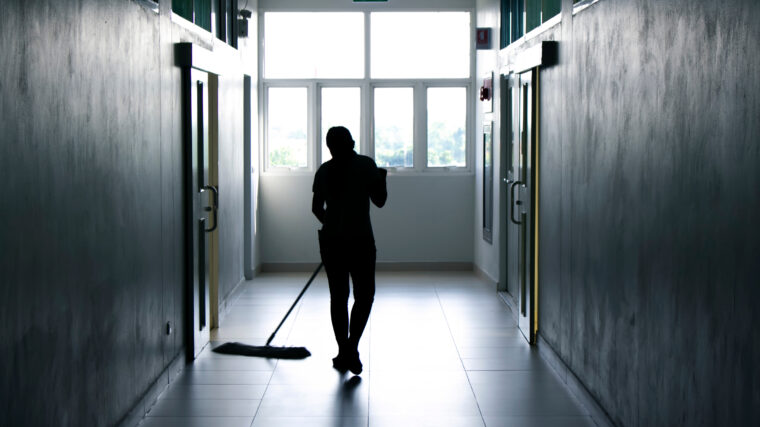We’re always looking at ways we can make our campuses more inclusive, accessible, and supportive for all students.
As it is pride month, it seemed a good time to consider what queering higher education could look like.
How can and how do we make our teaching, learning, processes, spaces, and university infrastructure inclusive for LGBTQ+ students?
Going to university is often a catalyst for personal development for the typical 18-year-old fresh from a small town, where you can pursue new friendships, and develop, question, and affirm your identity.
At least it felt like that for me.
This newfound independence lends itself well to becoming more of one’s self but higher education and universities aren’t immune to the complexities of being queer.
As I finish my term, I wanted to ask, what more can universities do to better improve the LGBTQ+ student experience?
Student journeys
The LGBTQ+ student journey encompasses everything from university spaces, attainment, progression, support services, and societies, to communities, teachers, curriculum, and extenuating circumstance forms (yes, even extenuating circumstances forms).
Interestingly, this was on the Government Equalities Office’s agenda in 2018 but work has apparently gone quiet.
The Equalities Office published an LGBT+ Action Plan which set out ways in which the lives of LGBT+ people could be improved in the UK with the aim that all people, regardless of gender identity or sexual orientation can be supported to reach their full potential.
As part of its recommendations, it planned to work with the Office for Students to investigate and tackle gaps in participation, experience, safeguarding, and success for LGBT+ students in higher education.
It is important to note the national collection of sexual orientation data is not yet a mandatory return to HESA for either staff or students which makes it challenging to assess national trends on issues such as student recruitment, attainment, and progression.
In 2020, OfS published a blog outlining its work to support LGBT+ students. In June 2020, OfS published data on outcomes (continuation and attainment) for LGB+ students. Trans students were not included as student gender identity data is collected separately from sexual orientation data.
Academic experience
The 2023 Student Academic Experience Survey does tell us that the sector has some way to go.
Scores on all four of the mental health questions are worse for LGBT students, and students report being significantly lonelier too. LGBT+ students attend fewer classes per week than average, and are more likely to apply for extensions.
They are also less likely to say that they are happy with their choice of course and university, and significantly more likely to have considered withdrawing from or leaving their university. Cost of living is also a bigger factor for LGBT+ students than it is for the average student.
Assuming that similar results would play out locally, what the survey doesn’t do is explain why. That’s why, as per the OfS guidelines, it’s crucial that universities engage with LGBT+ students and their representatives to understand what it is that is causing the scores with a view to working together to improve them.
It’s also important to develop a sense of where LGBT+ students are. Although the survey suggests that around a quarter of students identify as LGBT+, differences by subject are striking – in that sample only 16 per cent of health students identify as LGBT+ when contrasted with 35 percent of arts and humanities students.
Identifying subjects where LGBT+ students are less likely to interact with peers, more likely to feel isolated or more likely to experience bullying or harassment ought to help universities target efforts appropriately.
Continuation rates
Using 2017-18 data, the LGB continuation rate was 1.1 percentage points lower than heterosexual students. The continuation rate of students who are not heterosexual or LGB was 5.6 percentage points lower than heterosexual students.
For students completing studies in 2018-19, the attainment rate (First or 2:1) of LGB students was 2.4 percentage points higher than heterosexual students, and for those who did not identify as either heterosexual or LGB it was 6.9 percentage points lower than their heterosexual peers.
The results highlighted in the OfS blog feel outdated now with the rapid diversity in our student cohorts – but as universities in England get to work on new Access and Participation Plans, it’s worth considering if LGBTQ+ students are mentioned, and if so, are there interventions on supporting continuation, progression, and attainment and their broader student experience?
After all, LGBTQ+ students are highlighted in several of the risks in the OfS Equality of Opportunity Risk Register.
Another place to start is to ask what data is held on sexual orientation or gender identity – and ideally for that to be shared with the SU. From there, it’s worth identifying how this data was collected – is it done in a way that prioritises inclusivity and students’ needs – and if not, what needs to change?
Beyond OfS’ blog in 2020, the Equalities Office Action Plan didn’t focus only on student outcomes but on gaps in the student experience – the whole student journey.
This means universities could and should be considering how to make campuses a safe, welcoming, and inclusive environment from open day to graduation?
Answering this would be a dissertation-length piece of work, and I welcome ideas and input, but from my research and experience this year there are some key areas to highlight.
Representation
We know students want to see a curriculum in which they see themselves and their experiences represented.
As the Wonkhe and Pearson Belonging research demonstrated students felt that a diverse and inclusive curriculum was reflective of a high quality teaching experience, as well as being important to ensuring those from marginalised identities feel welcome on campus.
Are there queer authors on reading lists, do we cover LGBTQ+ healthcare on medical courses, what queer history do we teach, and how do we incorporate LGBTQ+ perspectives into the curriculum?
In queering the curriculum, we create a university in which students can see themselves represented and offer opportunities to explore individual identity empowering LGBTQ+ students.
Everyday changes
Representation isn’t limited to curricula, it’s the everyday inclusive practices in and out of the classroom that foster a safe sense of belonging for LGBTQ+ students.
Having pronouns in email signatures, encouraging students to introduce themselves and their pronouns in seminar rooms, flying flags (not only in Pride month) on campus, and access to safe queer spaces are seemingly small but powerful acts that go a long way.
Support services
LGBTQ+ students face additional challenges and are likely to experience poorer mental health and wellbeing. More inclusive and additional support is needed in our support services. SU societies provide levels of peer support but creating a more inclusive wider community is the goal.
Professional support through student wellbeing services needs to be culturally competent with specialist knowledge of sexuality, gender orientation, and identity alongside representation from LGBTQ+ staff.
Importantly, this needs to be effectively communicated so students feel comfortable using these services when and if they need to. As research from Student Minds suggests, LGBTQ+ students may have different requirements when it comes to mental health support and institutions need to work to ensure they offering this support, or working with specialist organisations who can fill this gap.
Processes that are inclusive are incredibly important – from reporting a hate crime or submitting an extenuating circumstance form, these processes need to be inclusive and accessible to LGBTQ+ students, and perhaps more importantly, students need to trust in these systems in the first place.
Celebrating and championing
When students see their university researching LGBTQ+ topics, flying pride flags, celebrating, championing queer rights and lobbying against harmful policy in government and internationally, they not only recognise themselves at the institution, but that the institution recognises them.
This links closely to safety. If students can see that the space where they might be developing and forming their identity is celebrating and protecting them through research, lobbying work, physical representation, inclusive support services, a representative curriculum, and pronouns in email signatures (to name a few things), it’s likely they will feel safer and more supported.
When we’re thinking about queering higher education, we need to first be identifying if we have the data (if not, why not?) on continuation, progression, and attainment for LGBTQ+ students and put in place interventions. But it’s more than that.
The LGBTQ+ student experience encompasses additional difficulties that we can alleviate and improve on our campuses and the more we do to foster inclusive practices, pedagogies, and processes, the more we create safe spaces for LGBTQ+ students.
Happy Pride!













